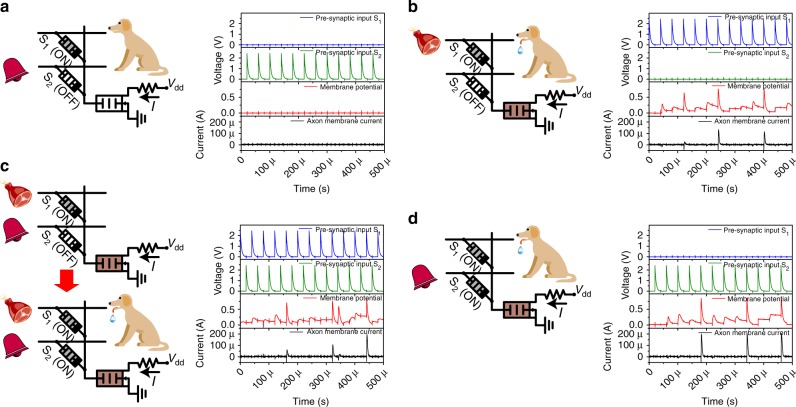Fig. 3.
Capacitive network for associative learning based on the Hebbian-like mechanism. Two pre-synaptic signals model the sight of food and the sound of a bell, respectively. The post-synaptic neuron models the salivation of a dog. The initial weight of the synapse interfacing with the “food” pre-synaptic neuron was large, while that of the synapse connected to the “bell” pre-synaptic neuron was small. a Probing with only the “bell” signal before association. The post-synaptic neuron did not fire. b Probing with only the “food” signal triggered the firing of the post-synaptic neuron. c Associative learning with simultaneous “bell” and “food” stimuli applied for a sufficient time. If the relaxation time after firing of the “salivation” pre-synaptic neuron was long enough, the backpropagating signal could overlap with the forward propagating voltage spikes from the “bell” neuron, which programmed the non-volatile pseudo-memcapacitor (NPM)-based “bell” synapse. d Probing after the conditioning phase. The post-synaptic neuron fired with only the “bell” stimulus

